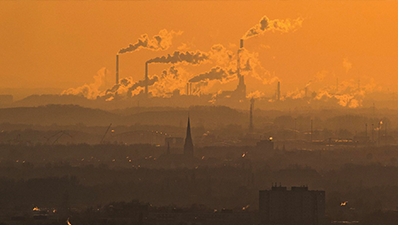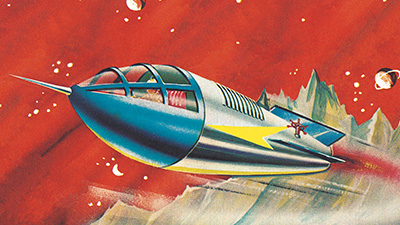The Great Acceleration
Teacher Resources
Driving Question: Why has change accelerated since 1945?
The world changed quickly after 1945. Examine how technological, health, and food production advances have increased global pressures and impacted the environment.
Learning Objectives
- Use evidence to analyze how globalization has impacted the environment.
- Create arguments using historical evidence to support claims and communicate conclusions through informal writing.
Vocab Terms:
- biodiversity
- climate change
- emissions
- environment
- pesticide
- unsustainable
- vaccination
Opener: The Great Acceleration
To teach this lesson step, refer to page 2 of the Lesson 9.4 Teaching Guide.
In the last century, new technologies have reshaped human societies. Is change accelerating as a result, or is this more of the same?
Accelerating Population Growth
To teach this lesson step, refer to page 3 of the Lesson 9.4 Teaching Guide.
Review the Reading Overview for strategies to help students understand a variety of texts.
In this part of the lesson, you’ll explore how rapid population growth and environmental trends reveal the pace of global change. From urbanization to rising resource use, these shifts help explain why the post-1945 era feels so accelerated.
-
Guiding Questions
-
Before you read
Preview the questions below, and then skim the article. Be sure to look at the section headings and any images.
While you read
Look for answers to these questions:
- What has been the long-term trend in global population?
- How has urbanization changed in the past 200 years?
- How has industrialization affected CO₂ levels?
- Why are rising CO₂ levels a problem?
- What are some health effects of using fossil fuels?
After you read
Respond to these questions: Do you agree that humanity must cooperate to reduce the environmental impacts of population growth? Why or why not?
Is Change Accelerating?
To teach this lesson step, refer to page 5 of the Lesson 9.4 Teaching Guide.
Check out the OER Project Video Guide to help you incorporate best practices when using video as part of your teaching.
How do you facilitate in-class debates? Jump in on this thread in the Community Forum.
Are things changing faster than ever before? In these materials, you’ll examine how advances in technology have transformed our world and what this means for the future.
-
Guiding Questions
-
Before you read
Preview the questions below, and then skim the article. Be sure to look at the section headings and any images.
While you read
Look for answers to these questions:
- What is a transistor and why is it an important part of the Great Acceleration?
- How has technology broken down boundaries in the twentieth and twenty-first centuries?
- Why do some scholars believe that technological acceleration can’t keep moving at these rapid rates?
After you read
Respond to these questions: What do you think might happen to the pace of acceleration in the next 10 years? What about in 100 years?
-
Guiding Questions
-
Before you watch
Preview the questions below, and then review the transcript.
While you watch
Look for answers to these questions:
- Why did William Gaud coin the term “Green Revolution”?
- How did Cold War concerns help start the Green Revolution?
- How did the Green Revolution vary in different regions?
- What methods were used in the Green Revolution?
- What are some criticisms of the Green Revolution?
After you watch
Respond to this question: How does the Green Revolution connect to the frame of production and distribution?
Key Ideas
-
Guiding Questions
-
Before you watch
Preview the questions below, and then review the transcript.
While you watch
Look for answers to these questions:
- Why was smallpox considered the worst disease in history?
- What is variolation?
- Who created the first smallpox vaccine?
- What was ring vaccination?
- What helped make the eradication of smallpox successful?
After you watch
Respond to this question: What do you think is the most important step humanity could take to prevent another pandemic?
Key Ideas
Debating Acceleration
To teach this lesson step, refer to page 7 of the Lesson 9.4 Teaching Guide.
Curious how this debate as worked in other classrooms? Check out the posts Acceleration Debate: many connections to Earth Day and “Is Change Accelerating?” debate.
It’s your turn to take a stand! Weigh the evidence and debate a big question: Can innovation keep up with the pace of change? You’ll sharpen your argument skills and deepen your understanding of how acceleration shapes our future.
Closer: The Great Acceleration
To teach this lesson step, refer to page 9 of the Lesson 9.4 Teaching Guide.
You’ve explored decades of intense change. Now, it’s time to reflect on its impacts by writing a letter into the past.





